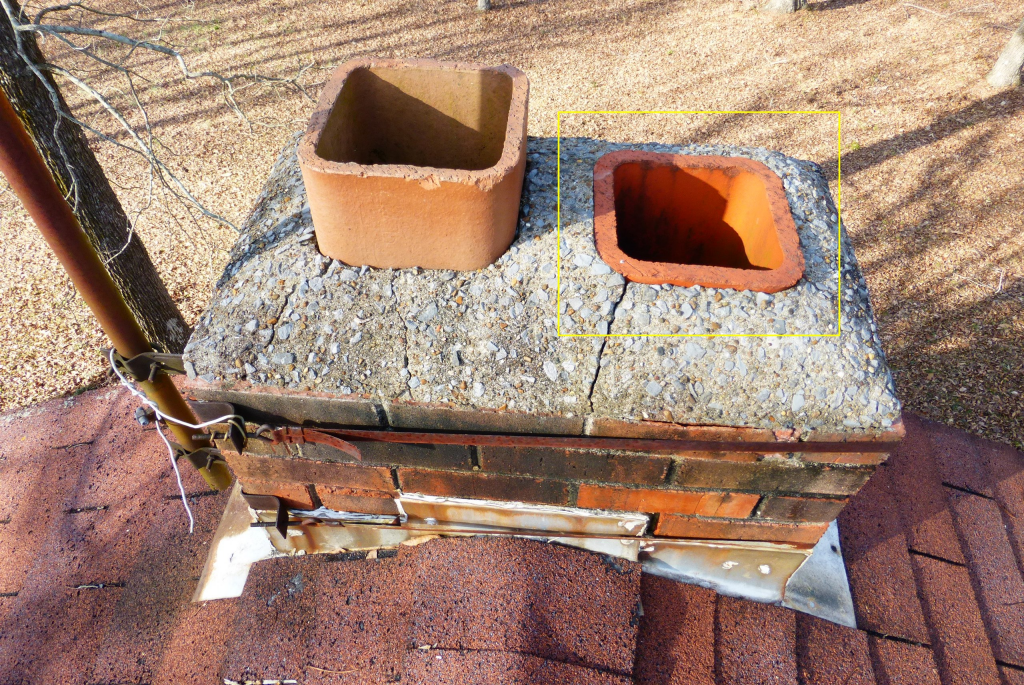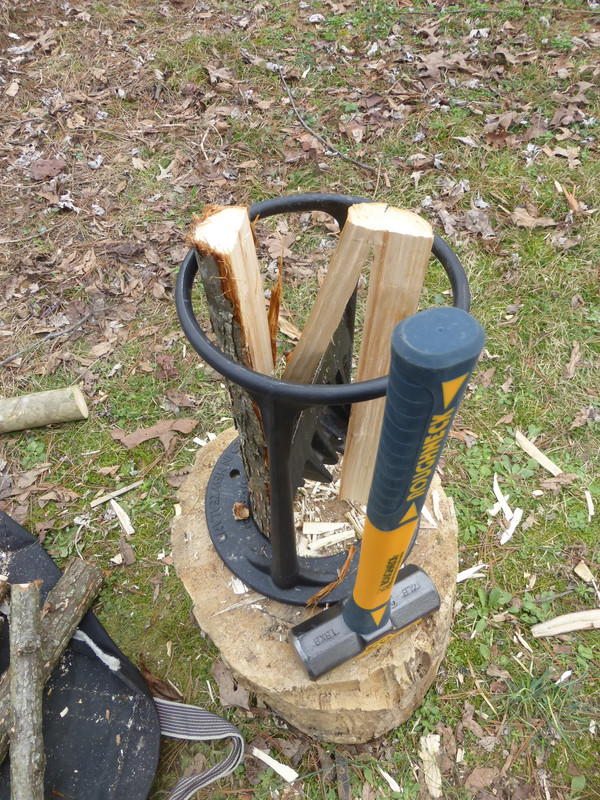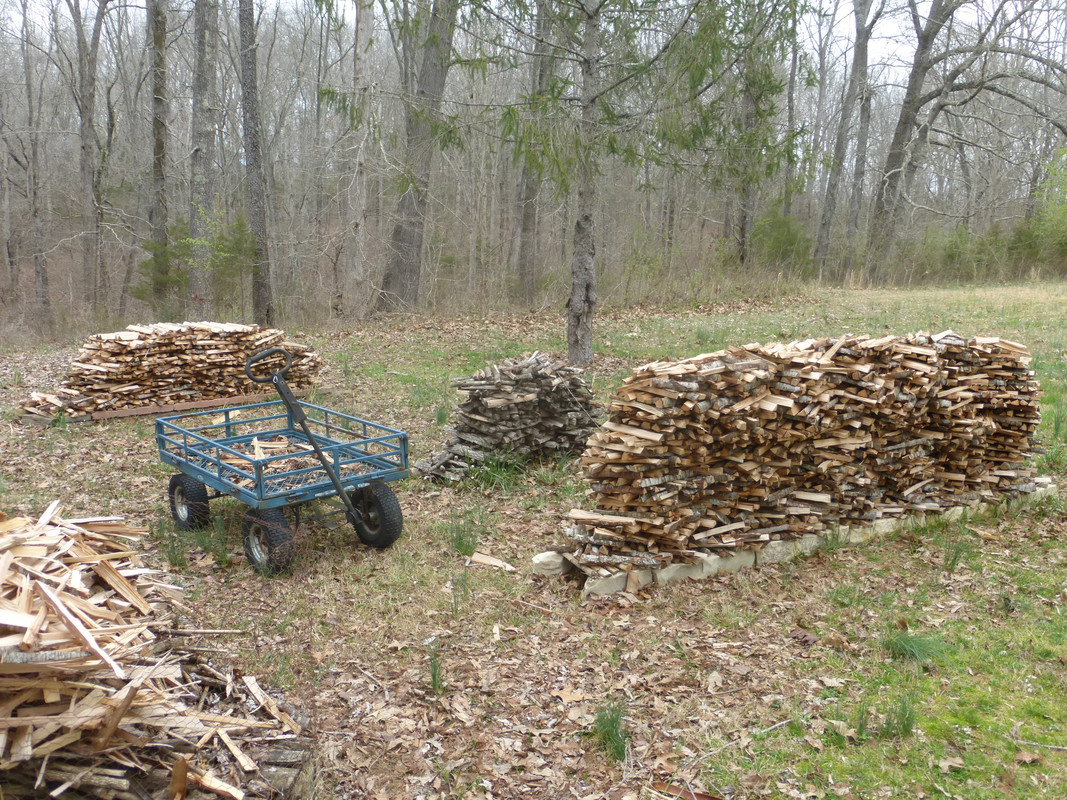The Liberator rocket stove
In February of 2018, with help from friends and family, I installed the Liberator wood-burning rocket stove (https://www.rocketheater.com). The Liberator is the only rocket stove available on the market that is certified safe for home installation. I wanted a stove that uses small amounts of wood and burns so efficiently that I wouldn't have to deal with heavy creosote buildup or large amounts of ash. The Liberator has delivered on those aims. I also wanted a way to stay alive if the power or HVAC fails for too long.

I chose not to install a pellet hopper, which is supposed to provide a steady burn for 10-12 hours. I didn't want to have to buy, and rely on, pellets. That configuration is for people who need this as a primary heat source and who can't tend to the stove often.
I mainly burn wood on freezing mornings, to help the heat pump bring the temperature up. Much of the hot air around the stove gets sucked down the hall, into the return vent, and back through the HVAC system. That is good; I don't need a room fan, and the heat pump appreciates the warm return air.
The stove needs dry, healthy wood to burn hot and smokeless. Most mornings, after the stove warms up, it runs at about 350-400F. I have gotten it as high as 650F. This depends on the wood, how it is arranged relative to airflow, and how much you're willing to fiddle with it. Gravity takes care of much of the wood feeding, but you can adjust it with your poker to keep the pieces ventilated and burning hot. I step outside to confirm efficiency by looking at what's [not] coming out of the chimney.
I don't mind having to fiddle with the stove. I used to fiddle with the fire when I had a fireplace.
Further, my purpose for this stove is not to provide the main source of heat. It is to provide comfort and energy savings. Someday it might also serve as an emergency heater; it is certainly capable of keeping us alive in a power-down situation.
Infrastructure
The house was built with an external chimney having two flues fitted for wood stoves, one in the living room and one in the basement. Previous owners had used a conventional wood stove in the basement, but that scenario is not for me. I'm not comfortable leaving anything burning unattended for too long, and this stove needs frequent tending to maintain a hot burn.
The stove needs a good draft and chimney stack to operate correctly (that is, with a hot, clean, almost smokeless burn). I reckon my stove has about 12-14 feet of flue, counting the inside stovepipe, and this is about the minimum required.

Several members of a wood-burning social site said that I should install an all-metal flue in the chimney for best results (this would be inside of the clay liner). But I tend to err on the cheap side; and the existing flue seems to be providing a decent draft, especially since I sealed up the cleanout door at the bottom of the chimney. On a cold day, with the house at 65F (thanks to the heat pump), there is already a slight draft that can be detected.
Topside, the chimney is not in great shape. But I am running mostly warm air through it, and not much smoke. I don't expect creosote buildup for several years, if at all.

Because the flue is flush with the crown, I will have to buy an adapter if I want to install a chimney cap.
Safety
If you don't do stupid stuff, this device is safer than a fireplace or a conventional wood stove. What would be stupid? It would be stupid to burn something really inappropriate such plastic or other petroleum products.
Never turn on your attic fan or window exhaust while the fire in the stove is blazing! The fire will come roaring back up the feed tube like a blowtorch.
As long as you start the stove properly and keep the lower lid in place (on the cleanout/starter opening), there is virtually no risk of flames or sparks escaping the stove. As long as the draft is going, virtually no smoke will escape into the house. Indeed, with good firewood it is normal to achieve a smokeless burn as soon as the fire gets hot enough.
Use the recommended method to safely start the fire. You must read the instructions and watch the video to get this down pat. As soon as the twigs are burning, you can add progressively larger pieces of wood.
During burning, you must always leave the hopper completely uncovered; put the lid on the floor and forget it. Don't try to control the burn rate by damping; always let the fire burn hot and clean. If you want less heat, use less fuel.
To stop the fire, you simply put the lid on the hopper. That snuffs out the draft and thus the fire. Otherwise, let the last embers burn themselves to ash and then close the hopper. When there is no fire, the lid should stay on the hopper to prevent a draft sucking your warm room air up the chimney.
Harvesting firewood
The best stuff is store-bought, kiln-dried, oak kindling, but that costs over four bucks a bag.
On my property, I've been cutting down saplings and small, uninvited trees. I recently bought a Kindling Cracker to split this stuff properly and safely:

This thing won't work for logs that are too thick, say more than 6 inches. So my harvest needs to be focused on unwanted trees that are nearing that size.
After being split, the wood will now need to sit and season, preferably for at least a year.

It helps to use a moisture meter to test wood. Healthy green wood is moist, and so is rotten wood. The former is good to split and stack; the latter should be discarded.
Installation notes
The user manual provides details for different installation situations.
You need to do a long burn (at least four hours) outdoors before installing the heater. This is to heat-cure the paint job. Doing it outdoors prevents the resulting off-gassing from polluting your indoor air. This requires buying more stovepipe than you actually need so you get a long enough flue to create a good draft. I tied my makeshift chimney to a basketball goal to stabilize it.

The first time you burn indoors, leave a window open to provide a bit of ventilation until you assess whether there are still paint fumes. Do not run a window exhaust fan or attic fan.